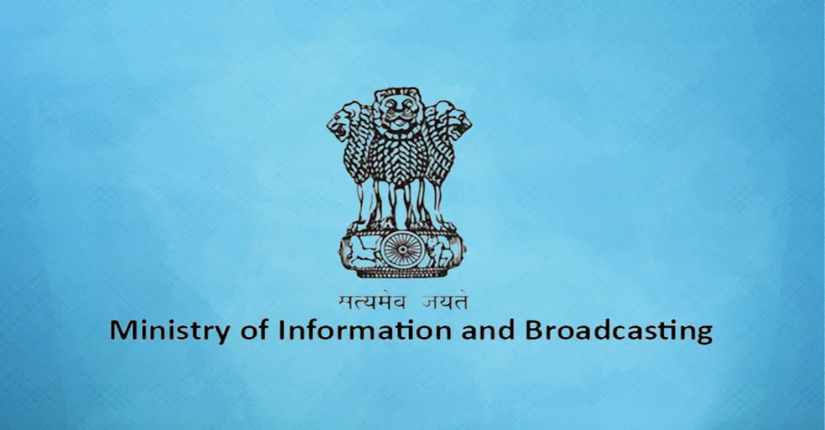MIB: Drafting Rules for Online Ads — A Step Towards Responsible Digital Advertising
The proliferation of online ads brought about by the digital age has revolutionized the way that companies connect with their target audience. But there have been difficulties with this evolution. There has never been a greater need for precise rules governing online advertising due to deceptive promises and aggressive targeting. In India, the Ministry of Information and Broadcasting (MIB) has taken the lead in creating rules to control internet advertisements, making sure they are equitable, open, and considerate of the rights of consumers. In this blog, we examine the importance of these initiatives and the potential implications of the MIB draft rules for consumers, advertisers, and the larger digital ecosystem.
The Need for Regulation
There are ads everywhere on the internet. Businesses are always fighting for attention, whether it’s on social media, search engines, or streaming platforms. The distinction between what is real and what is fake is frequently hazy in this environment due to the extraordinary magnitude of digital advertisements. Concern over the abuse of internet advertisements has grown in recent years, encompassing everything from deceptive product claims to deceptive tactics directed at vulnerable groups. The swift expansion of digital platforms in India has made it necessary to have a regulatory framework that can adapt to this change. In order to establish a balanced ecosystem where marketers can prosper and consumers are shielded from dishonest activities, the MIB draft rules are being designed to regulate internet advertising effectively.
Key Features of the Draft Rules
The MIB draft rules focus on several core principles that address the ethical, legal, and operational aspects of online advertising. Some of the key features include:
1. Transparency in Advertising
By making sure advertisements can be easily distinguished from natural content, the new proposed regulations seek to increase openness. To avoid confusing consumers, all advertisements—native, social media, and display—must be marked as “sponsored” or “paid partnership.” The goal of this action is to rebuild consumer and advertiser trust.
2. Avoidance of Misleading Claims
Regulation of deceptive or fraudulent claims in advertisements is the main goal of the MIB’s draft regulations, which mandate that all advertisements be accurate and backed up by proof. Companies are required to support their claims with proof, such as clinical studies or certificates. Preventing dishonest activities and ensuring fair advertising are the goals.
3. Consumer Protection
The proposed regulations shield children and other vulnerable populations from deceptive or damaging advertisements. In order to protect the integrity of consumer data, they also regulate obtrusive, data-driven advertising, which allays privacy concerns. Protecting consumer rights and encouraging moral advertising are the goals.
4. No Harmful or Offensive Content
Ads that promote dangerous goods like alcohol, tobacco, or gambling are prohibited under the new regulations, which also make sure that risky habits are not glorified. The MIB draft rules seeks to shield young adults and adolescents in particular from damaging content. The purpose of these protections is to advance public health and welfare.
5. Regulation of Digital Platforms
The draft rules hold digital platforms accountable for ensuring ads meet legal standards, requiring them to vet ads before publication. Platforms like Facebook, Google, and YouTube must also offer users easy ways to report harmful or inappropriate ads. This aims to promote accountability and foster a self-regulating advertising ecosystem.
The Impact on Advertisers
The new MIB guidelines bring opportunities as well as obstacles for advertisers and enterprises. On the one hand, the regulations place stricter demands on accuracy and openness, which may raise the cost of compliance and complicate operations. To make sure their promises are reliable and supported, advertisers will need to spend more money on research and development. However, these rules may improve the general standard of internet advertising. Through the removal of deceptive advertisements and safeguarding consumers from abuse, the new regulations may help create a more reliable advertising landscape. Following the regulations can help advertisers gain the trust of consumers, which can strengthen brand loyalty and build interactions with customers.
The Impact on Consumers
As far as consumers are concerned, the MIB’s proposed measures are positive. Customers can make better decisions without being exposed to dishonest or manipulative practices when online advertising is more transparent and accountable. Furthermore, improved consumer protection policies make sure that vulnerable populations—like children or people with less computer literacy—are not readily taken advantage of. In order to give consumers a say in the regulating process, the laws also give them ways to denounce damaging or deceptive advertisements.
Conclusion
A growing awareness of the need for regulation in the digital sphere is reflected in the MIB draft rules efforts to create comprehensive guidelines for online advertising. These guidelines are a significant step in developing a more moral and accountable internet advertising ecosystem, even though they might force companies to modify their advertising tactics. Policymakers, advertisers, and consumers must continue to work together as digital platforms develop in order to create a just, open, and sustainable digital marketplace. In the end, these rules aim to promote a culture of trust and accountability in the digital age rather than merely limiting advertising.
